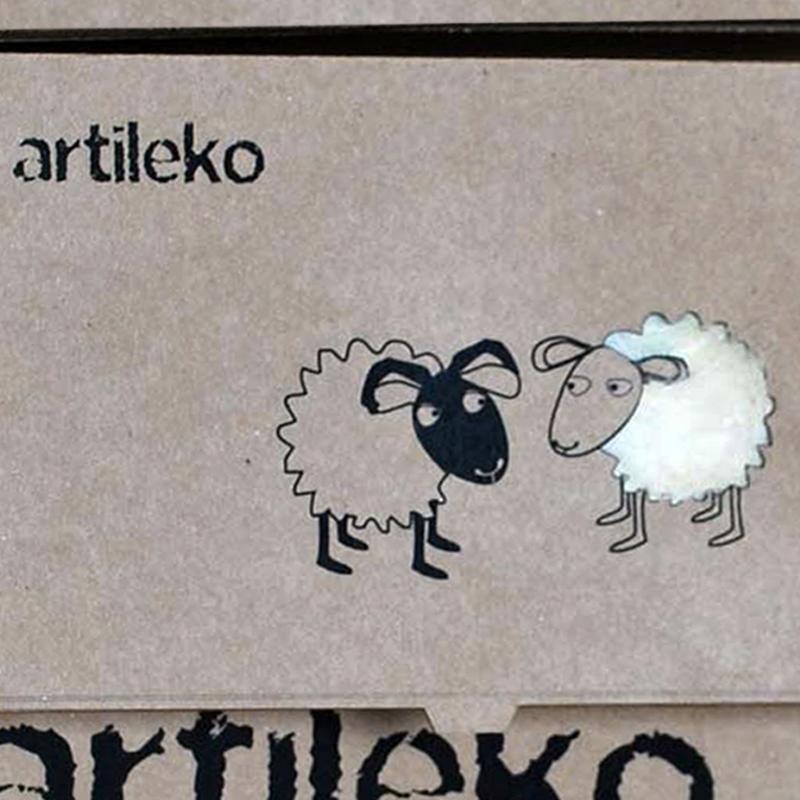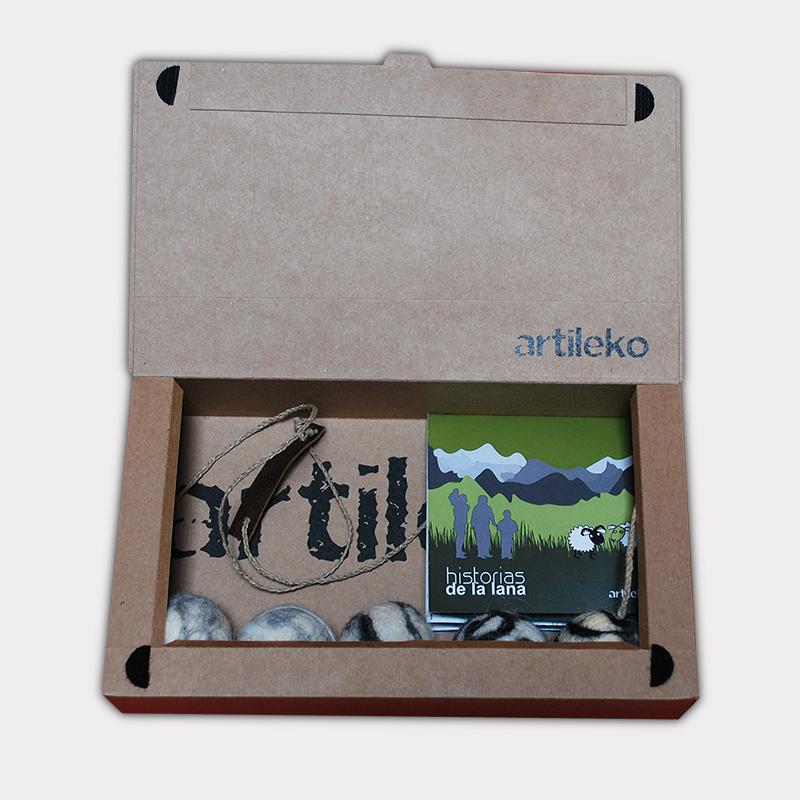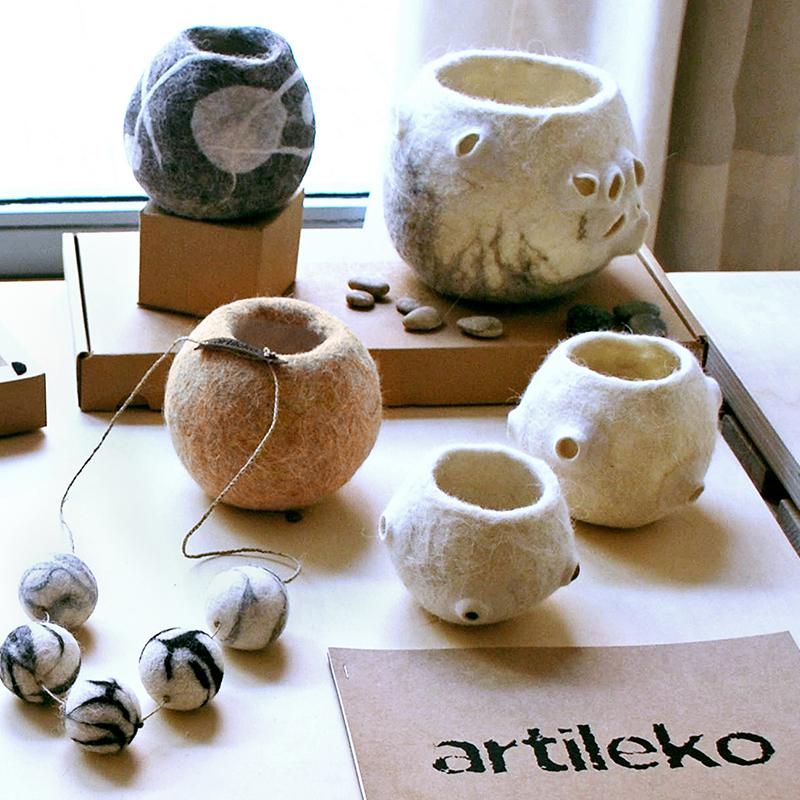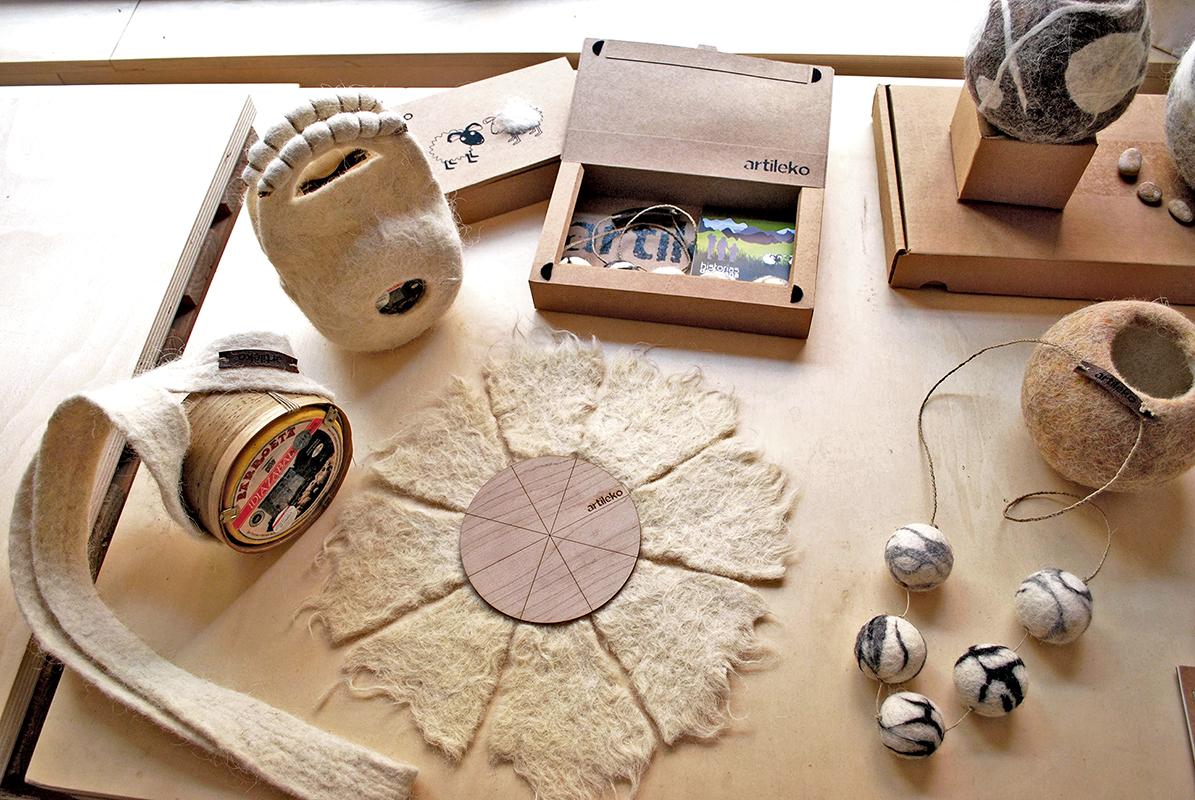


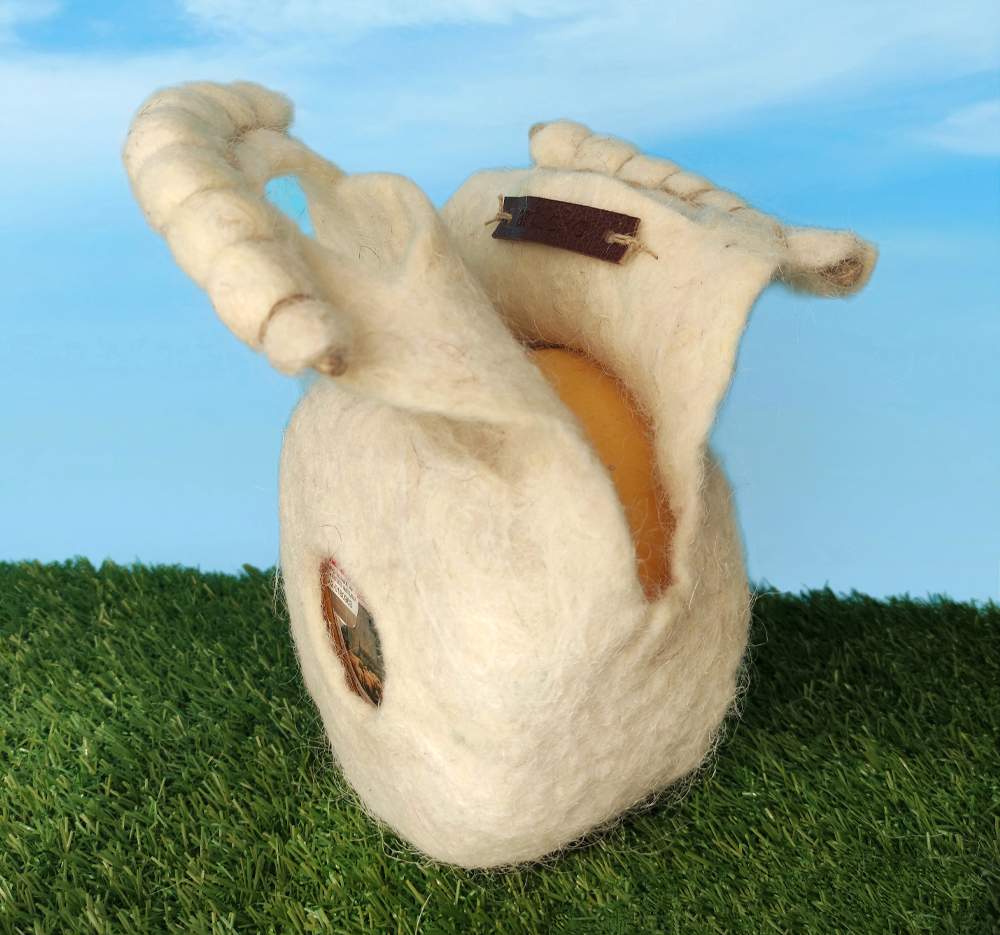

El proyecto
Poner en alza a través de la artesanía, el diseño y la cocreación una materia prima tradicional de nuestro entorno: la latxa y/o carranzana.
Desvincular su uso tradicional en la realización de piezas así como de las técnicas que se han empleado con ella, tales como la tejeduría del textil en bajo lizo y el punto con agujas.
La Hisitoria
La Lana en tiempos pasados tuvo una utilidad que ha quedado olvidada y suplantada por nuevos materiales. La lana era usada para relleno de colchones y avituallamiento para la familia como calcetines, jerseys,mantas.
Lo que antaño era un natural aprovechamiento hoy en día resulta un problema de índole ecológico. Entre una y dos veces al año se realiza la esquila de la oveja, despojándola de su abrigo natural. Vellones* que año tras año se almacenan sin salida alguna o se intentan destruir sin éxito, abandonados en barrancos, cuevas, etc.
Los Productos
Realizar piezas que son inusuales enelaboración con esta materia prima, aunándola con un diseño contemporáneo. De este modo queremos dar protagonismo a la lana.
En cuanto a la técnica a emplear, siguiendo las premisas mencionadas se realiza mediante la técnica de fieltrado en húmedo.
La lana latxa y la carranzana no son lanas que se comercializan, debido a estas características y a lo que ya apuntamos en un principio, la incorporación al mercado de nuevas materias que las han remplazado.
Las características de esta lana han sido aprovechadas para la realización de los objetos que proponemos. Resaltar la rusticidad propia de la materia prima, creando contrastes en las superficies, aprovechando la fibra gruesa de esta lana que propicia un textil hueco y ligero.Trabajar la materia prima siempre a su favor para extraer de ella siempre lo mejor.
La lana merina es empleada en algunas aplicaciones muy determinadas. Esta lana tuvo su presencia y uso por estas tierras en tiempos pasados. Llegaba hasta el puerto de Bilbao, desde Castilla, para ser embarcada rumbo a los centros industriales textiles europeos.
The project
To promote through craftsmanship, design and co-creation a traditional raw material of our environment: the latxa and/or carranzana.
To disassociate its traditional use in the making of pieces as well as the techniques that have been used with it, such as low-warp textile weaving and needle knitting.
The History
Wool in the past had a usefulness that has been forgotten and replaced by new materials. Wool was used for stuffing mattresses and for family supplies such as socks, jumpers, blankets.
What was once a natural use is nowadays an ecological problem. Once or twice a year the sheep are shorn of their natural coat. Year after year, the fleeces* are either stored with no way out or attempts are made to destroy them without success, abandoned in ravines, caves, etc.
The Products
To make pieces that are unusual in the way they are made with this raw material, combining it with a contemporary design. In this way we want to give prominence to wool.
As for the technique to be used, following the aforementioned premises, it is carried out using the wet felting technique.
The latxa and carranzana wool are not wools that are marketed, due to these characteristics and to what we pointed out at the beginning, the incorporation to the market of new materials that have replaced them.
The characteristics of this wool have been used to create the objects we propose. Highlighting the rusticity of the raw material, creating contrasts in the surfaces, taking advantage of the thick fibre of this wool that favours a hollow and light textile.Always working the raw material to its advantage in order to extract the best from it.
Merino wool is used in some very specific applications. This wool had its presence and use in these lands in the past. It reached the port of Bilbao, from Castile, to be shipped to the European textile industrial centres.
 Izquierda: casa torre Barroeta
Izquierda: casa torre BarroetaLeft: Barroeta tower house
La quesería Barroeta debe el nombre a la Casa-Torre de Barroeta. A partir del siglo XIV se generaliza la violencia entre los dos bandos: Oñacinos y Gamboínos, en los que se dividen los diversos linajes de hidalgos vascos. Los Barroeta tenían como oponentes a los Ugarte. Ambas casas provienen de un tronco común, los Markina que se habrían separado ya para 1355. Las disputas económicas y de poder entre las dos familias se centraron a mediados del siglo XV cuando en 1470, los Ugarte incendiaron la torre de los Barroeta. La torre ha sufrido remodelaciones varias, pasando de torre defensiva a casa.
The Barroeta cheese factory owes its name to the Tower-House of Barroeta. From the 14th century onwards, there was widespread violence between the two sides: the Oñacinos and the Gamboínos, into which the different Basque noble families were divided. The Barroeta family was opposed by the Ugarte family. Both houses came from a common stock, the Markina, who had already separated by 1355. The economic and power disputes between the two families came to a head in the middle of the 15th century when, in 1470, the Ugarte family set fire to the Barroeta tower. The tower has undergone several alterations, changing from a defensive tower to a house.
En mayo de 2014 me puse en contacto con Barroeta, quesería familiar que produce queso con Denominaición de Origen Idiazabal en la localidad vizcaína de Markina-Xemein. Me presenté y expliqué con más detalle para qué requería su lana. Donaron unos seis vellones para acondicionar y realizar el proyecto.
En este paraje de Markina-Xemein hoy pacen tranquilamente las ovejas latxas, se elabora el queso con su leche y se esquila cuando manda el tiempo.
In May 2014 I contacted Barroeta, a family cheese factory that produces cheese with the Idiazabal Designation of Origin in the Biscayan town of Markina-Xemein. I introduced myself and explained in more detail what I needed their wool for. They donated about six fleeces to prepare and carry out the project.
In this part of Markina-Xemein, today the latxas sheep graze peacefully, cheese is made from their milk and they are sheared when the weather dictates.
Presentación de los productos
CUENCOS
objetos contenedores que por sus características de uso tradicionalmente se realizan en cerámica, madera, metal, piedra……….
Cada cuenco va acompañado de una bola de lana afieltrada con la palabra “Latxa” o “Artileko” deposita en el interior, estableciendo una relación de contenido, juego,etiquetaje, aludiendo al proyecto y/o materia prima.
COLLARES
esferas, bolas de lana, formas que nos recuerdan al hecho de recoger la lana hilada, preparada para tejer. Bolas conectadas con otra materia prima, muy enraizada en el textilautóctono: el lino. Objetos en los que nos interesa el volumen, no el peso. Nos interesa que la persona que los porte se sienta cómoda.
A partir de estos objetos surgieron nuevas propuestas.
Propuestas que involucran a la lana en objetos de uso cotidiano o que sirven de guía en experiencias lúdicas.
8 PORCIONES
es una presentación del queso en mesa que parte de la idea de cortar tradicionalmente el queso en forma de cuña.
BOLSA BANDOLERA PARA EL QUESO
es una forma elegante de portar el queso pensado para la audiencia masculina.
BOLSO PARA EL QUESO
es una forma elegante de portar el queso pensado para la audiencia femenina.
PACK EXPERIENCIAS
historias con un referente geográfico. Algo más que llevar un collar, ser portador de historias.
Producción Textil: Yolanda Sánchez
Diseñador colaborador: Xabier Llordés
Proyecto desarrollado en las III Jornadas de Creación Artesana por Arbaso y presentado en BEAZ en 2014
Presentation of the products
BOWLS
these containers are traditionally made of ceramic, wood, metal, stone, stone, etc.
Each bowl is accompanied by a felted woollen ball with the word "Latxa" or "Artileko" placed inside, establishing a relationship of content, game, labelling, alluding to the project and/or raw material.
NECKLACES
spheres, balls of wool, shapes that remind us of collecting spun wool, ready for weaving. Balls connected with another raw material, deeply rooted in local textiles: linen. Objects in which we are interested in volume, not weight. We are interested in making the person wearing them feel comfortable.
New proposals emerged from these objects.
Proposals that involve wool in objects of everyday use or that serve as a guide in playful experiences.
8 PORTIONS
is a presentation of cheese on a table based on the idea of traditionally cutting cheese in the shape of a wedge.
SHOULDER BAG
is an elegant way of carrying cheese designed for a male audience.
CHEESE BAG
is an elegant way of carrying cheese designed for the female audience.
EXPERIENCE PACK
stories with a geographical reference. More than just wearing a necklace, being a bearer of stories.
Textile production: Yolanda Sánchez
Collaborating designer: Xabier Llordés
Developed project in III Artisan Creation Conference by Arbaso and presented at BEAZ in 2014.
 Lana latxa sucia
Dirty latxa wool
Lana latxa sucia
Dirty latxa wool
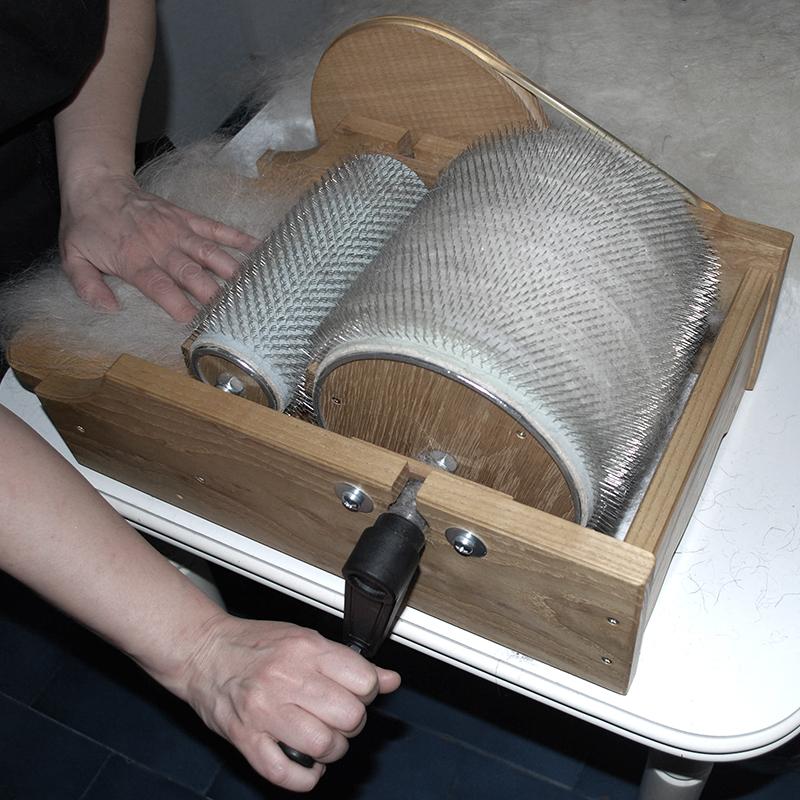 Cardando la lana límpia
Carding clean wool
Cardando la lana límpia
Carding clean wool
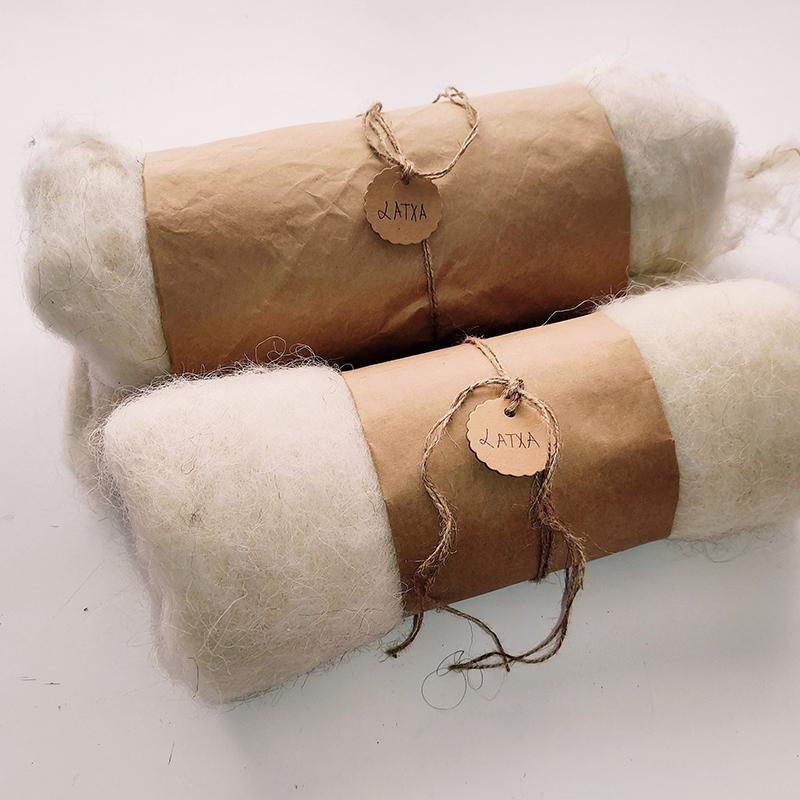 Lana procesada artesanalmente
Hand-processed wool
Lana procesada artesanalmente
Hand-processed wool
 Patrón para 8 porciones
Pattern for 8 portions
Patrón para 8 porciones
Pattern for 8 portions
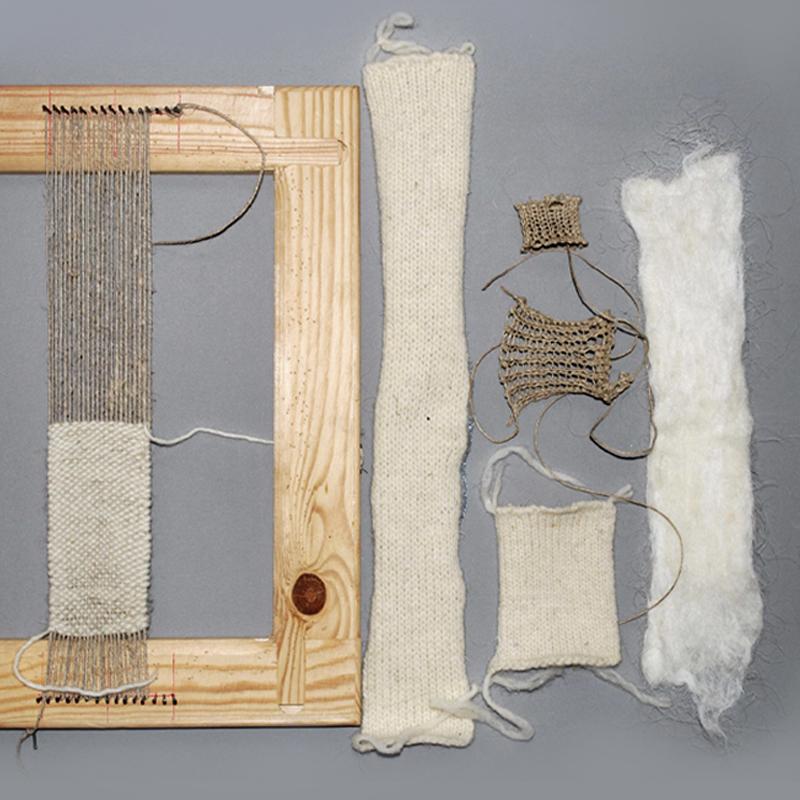 Estudio para la banda de la bandolera
Study for the shoulder strap
Estudio para la banda de la bandolera
Study for the shoulder strap
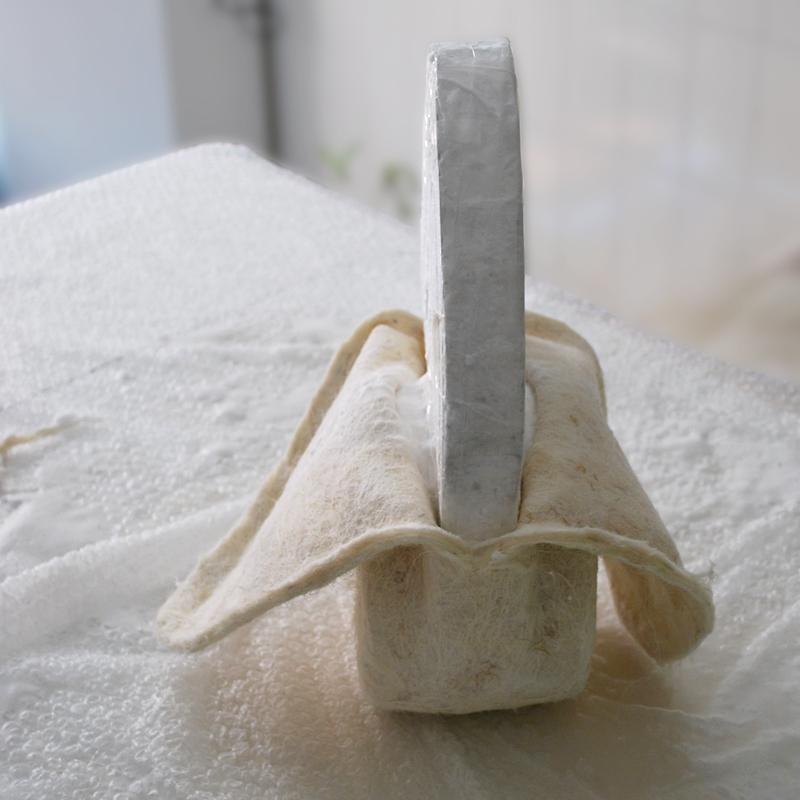 Fieltrado de lana para el bolso portaqueso
Wool felting for the cheese bag
Fieltrado de lana para el bolso portaqueso
Wool felting for the cheese bag
 Fieltrado en húmedo para 8 porciones
Wet felting for 8 portions
Fieltrado en húmedo para 8 porciones
Wet felting for 8 portions
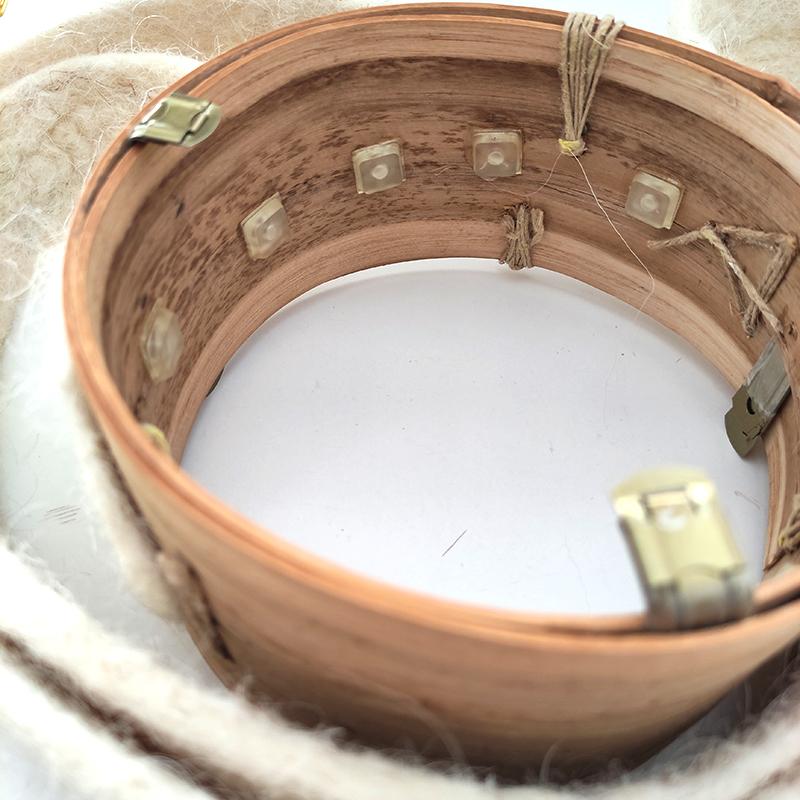 Cincha de madera para bandolera portaqueso
Wooden webbing for cheese carrying strap
Cincha de madera para bandolera portaqueso
Wooden webbing for cheese carrying strap
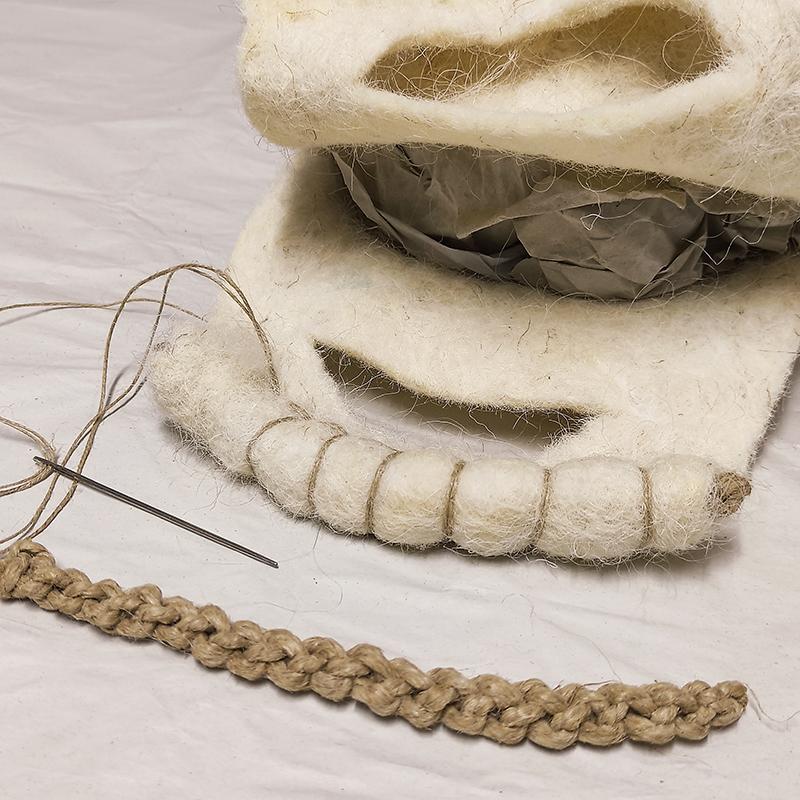 Confección del asa del bolso portaqueso
Making the handle of a cheese bag
Confección del asa del bolso portaqueso
Making the handle of a cheese bag
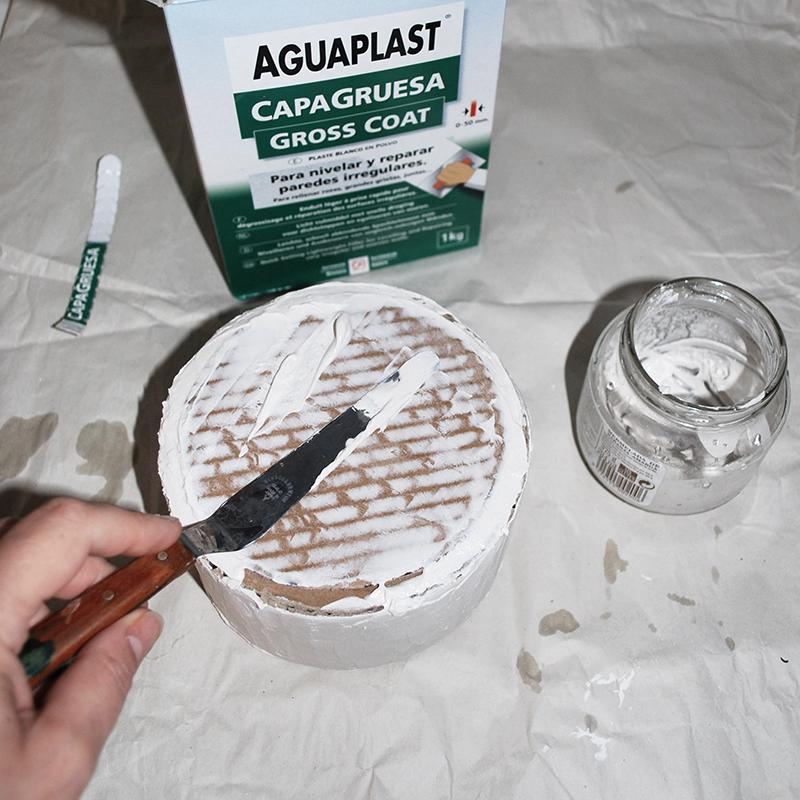 Realización de las maquetas de quesos
Creation of cheese models
Realización de las maquetas de quesos
Creation of cheese models
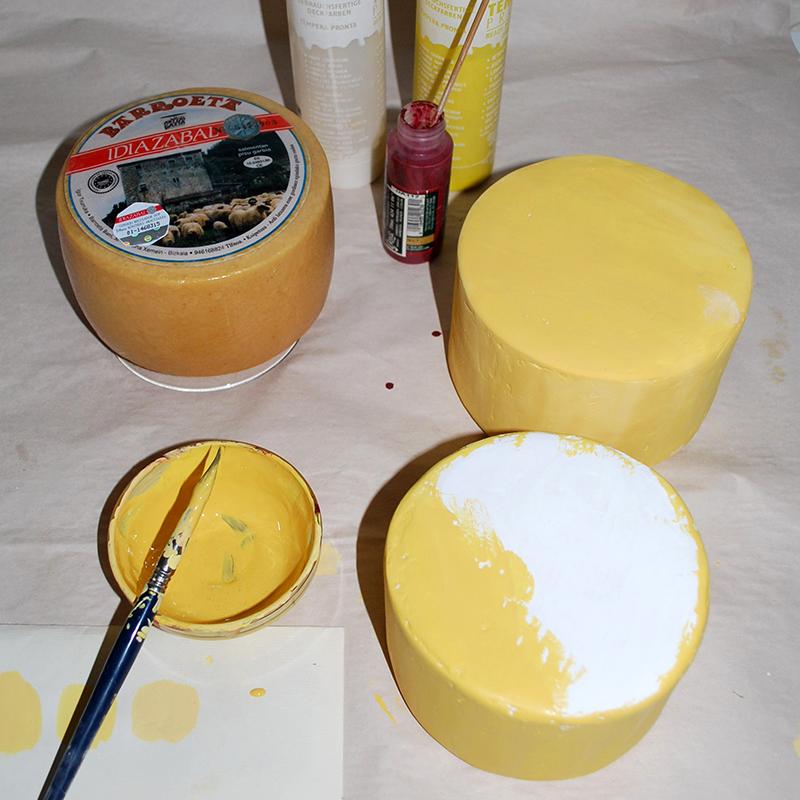 Aplicación del color. Al fondo el queso original
Colour application and original cheese
Aplicación del color. Al fondo el queso original
Colour application and original cheese
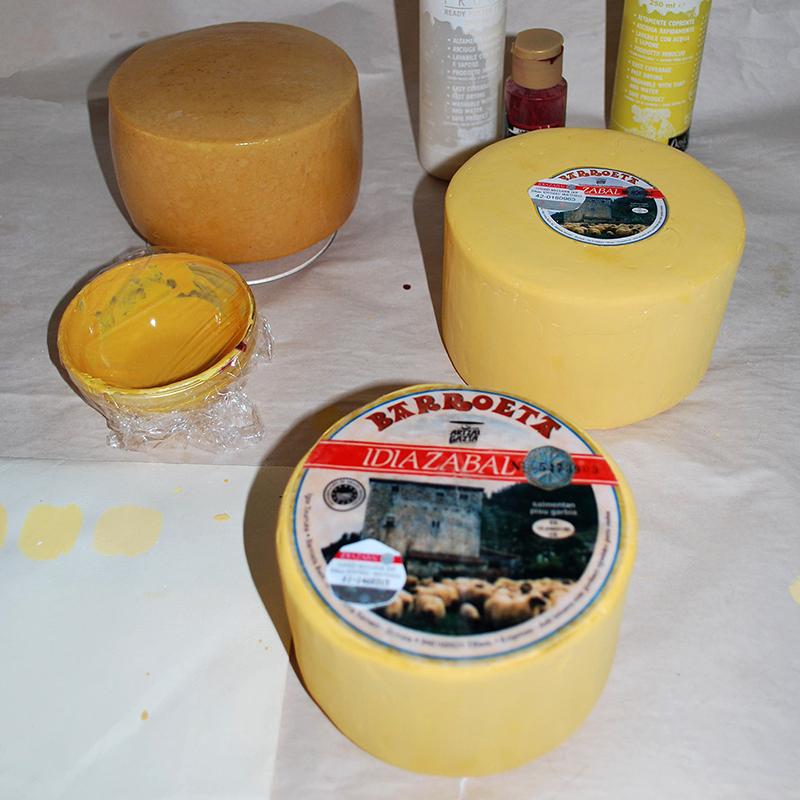 Aplicación de las etiquetas a las maquetas
Application of labels on models
Aplicación de las etiquetas a las maquetas
Application of labels on models
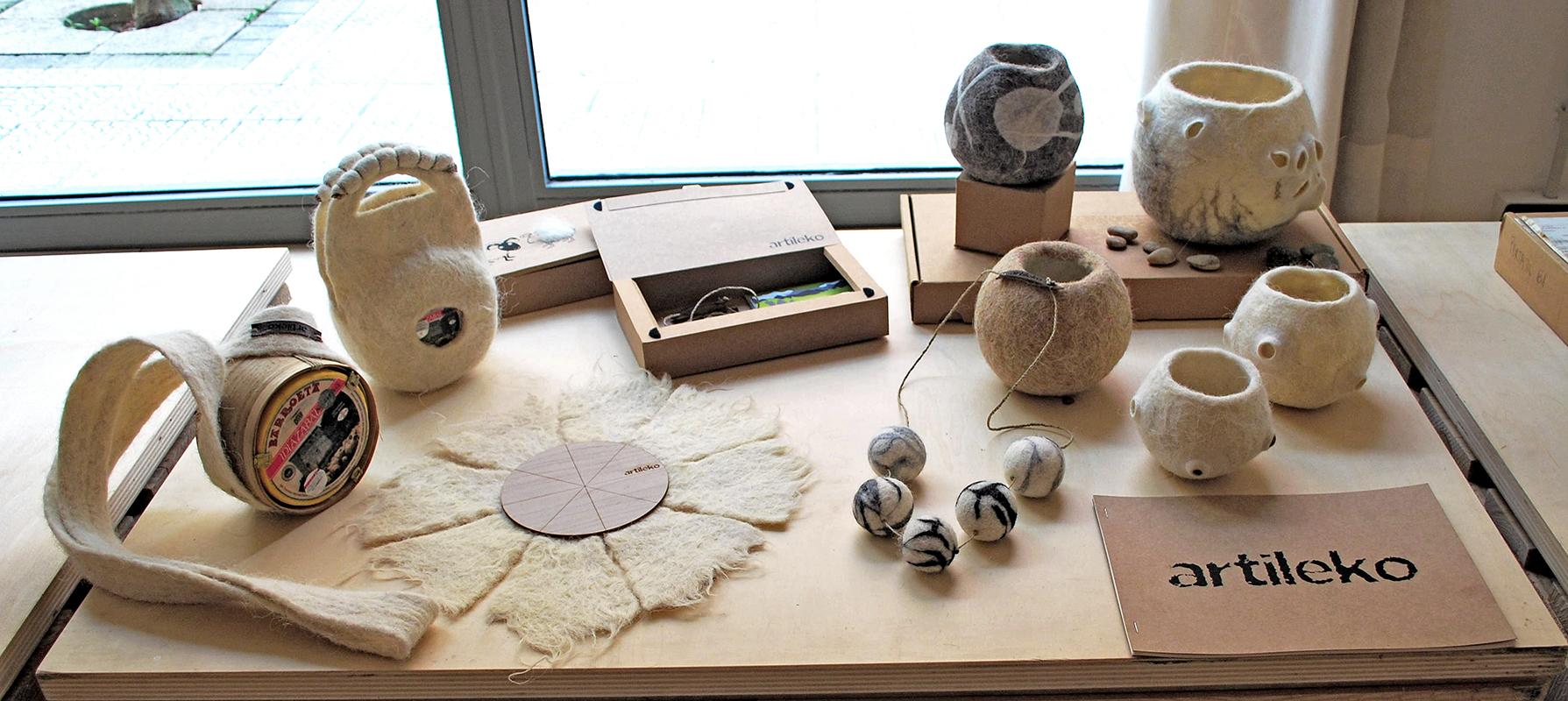 Exposición del proyecto en BEAZ - junio 2014
Project exhibition in BEAZ - June 2014
Exposición del proyecto en BEAZ - junio 2014
Project exhibition in BEAZ - June 2014
